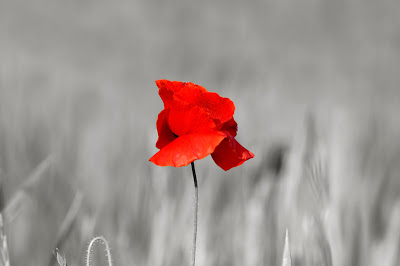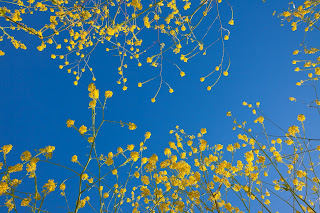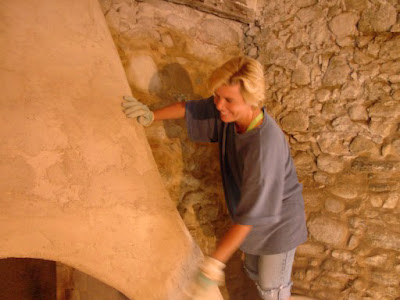
A Memory --- (My story, which took place in Oct 2004, was published in the January 2005 issue of Plein Air Magazine. Here it is below.)
During the 18th Annual Plein-Air Painters of America Workshop and Exhibition in the turn-of-the-century impressionist art colony of Old Lyme CT, 100 eager students embraced the seaside wind chill and intermittent rain and sunshine to paint among a few of the most recognized plein air painters in the nation. The instructors were Kenn Backhaus, Gay Faulkenberry, Louise Demore, Joseph Mendez, Ralph Oberg, Joseph Paquet, Ron Rencher, Brian Stewart, George Strickland, Linda Tippetts and Skip Whitcomb.
We're in a land of patterns and contrasts, with trees of saffron, terra cotta, and gold dust. With deep tones of copper and canary yellow against lapis lazuli skies, the cool October light and warm shadows reinterpreted the blues of the Connecticut River. This was the second consecutive year that PAPA visited Old Lyme. This year our group decided to come a month later to experience the fall foliage. We were deep in America's own Giverny at the most beautiful time of year, participating in a workshop with the highest caliber of plein air painting instruction.
Each instructor- with 10-15 students- had a designated painting spot for the week. The designations sent students to local homeowners' properties, to farms, marinas and nearby towns of Noank, Essex, East Haddam, Mystic, Guilford, and Clinton.
The workshop's opening day brought a westerly breeze that dropped the early-morning temperature to somewhere around forty degrees. A handful of other students and I set up our easels behind the Goodspeed Opera House in East Haddam.
Our instructor for the day, Ray Roberts- a plein air painter with an obsessive passion for finding the beautiful shapes in nature, assembled simple shapes like mosaics while demonstrating and lecturing about the fundamental truths of composing and executing a great painting. "When approaching the scene, it's all about patterns, light and dark patterns," Roberts explained. "There are infinite patterns in any given scene."
The following day, a whole new group of students worked at Lobster Landing in Clinton. George Strickland, our instructor and the current president of PAPA, explained to us that he focuses on what compels him to paint a particular scene. "I feel it's important for all of us to find that out." Strickland also stresses the importance of finding our own voices.
One day, the entire group visited historic Mystic Seaport. The instructors painted for three hours; then the students participated in a mass paint-out as the instructors offered critiques and advice. It was a perfect sunny afternoon of painting among the old sailing vessels and the nostalgic setting of the seaport museum.
Ralph Oberg spent a day at Griswold Point on the distinguished Connecticut Griswold family compound. The rains had come, but the wet weather was intermittent, so we toughed it out. Oberg quoted the late Russian impressionist, Sergei Bongard, "Paint the trees before the leaves and the dog before the fleas" and stressed that a good composition must be simple and strong.
Our rain soaked day was rewarded by a private preview showing of Plein Air Color & Light, an exhibition and sale of paintings by signature members of PAPA and dinner at the Hideaway Restaurant &Pub, the designated nightly hot spot among many of us for good conversation and drink with a few new friends.
On a cool crisp morning on Tiffany Farm, Kenn Backhaus demonstrated painting a cluster of barns receding into the fog. Backhaus explained, "When physics and poetry are combined in a painting, it makes a great work of art." By physics, he meant drawing, perspective, and value sense. Poetry he defined as the ethereal quality that occurs from being “in the zone” while painting. It quickly became another challenging day as the rain began to pour after lunch, but we stayed to work on our afternoon studies.
A raffle mixer followed the workshop at the Florence Griswold Museum. Our paintings were set up for viewing by the rest of the group, and we enjoyed wine, hors d'oeuvres and banter. As George Strickland called random names drawn from a hat, students roared with cheers as lucky winners received an assortment of gifts.
Saturday night, we were reunited again for the grand opening of Plein Air Color & Light. It was a fine evening at the Lyme Art Association. as wine flowed and paintings sold. Smiles and laughter prevailed in "America's Giverny".























